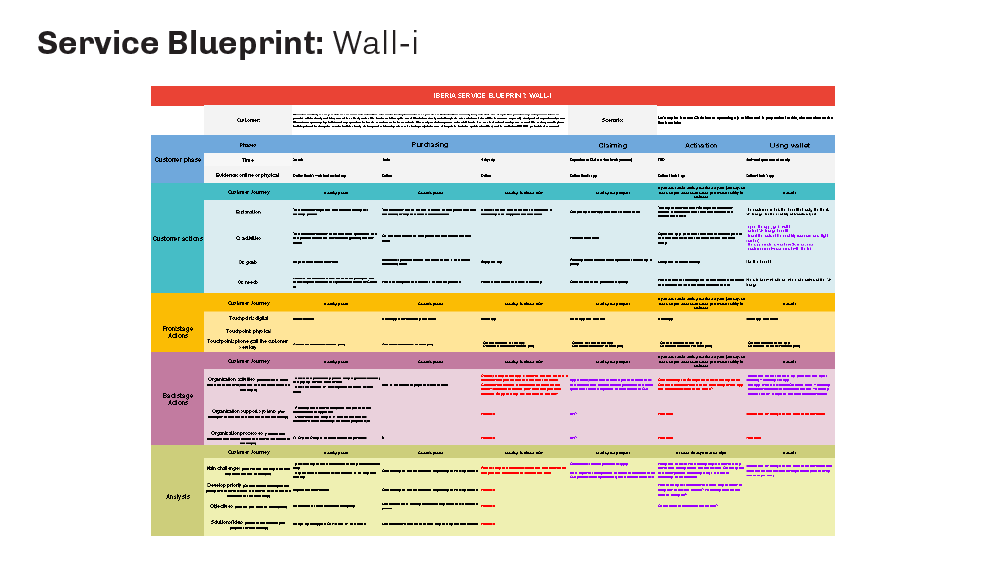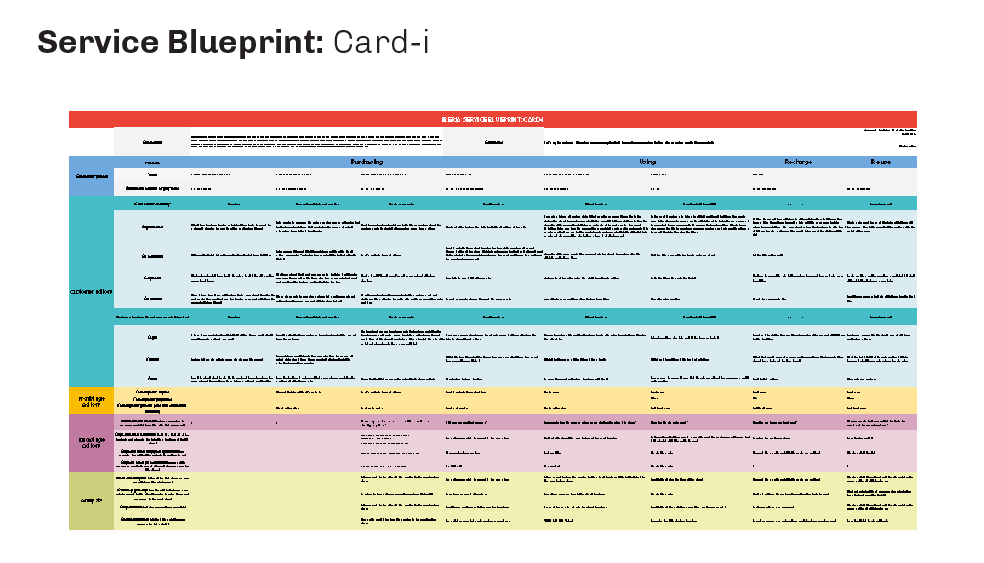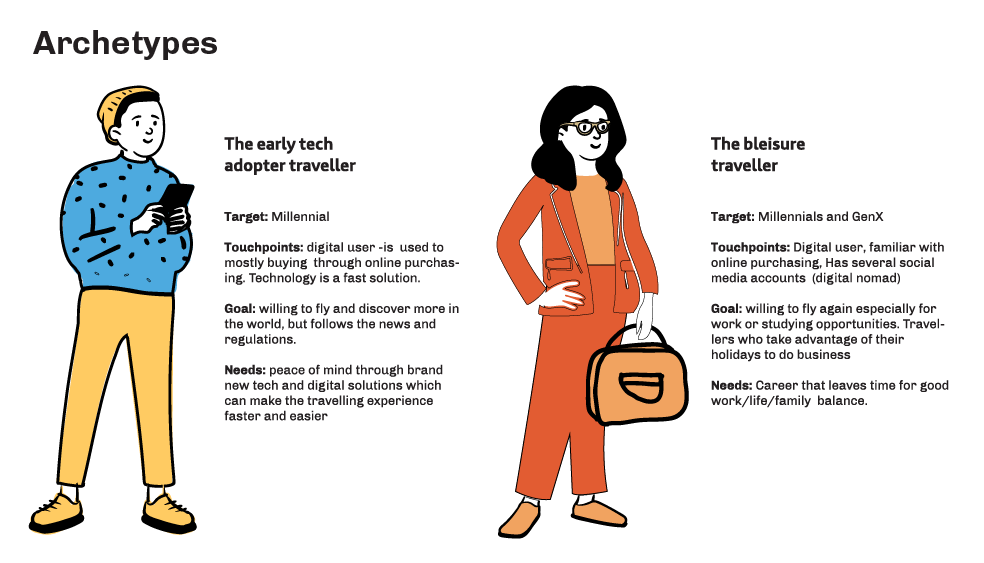Travel Smart
New travellers need peace of mind and convenience in every moment of the journey during these uncertain times and especially during the “what now” improvised moments. We want to make simple the “what now” moments of the journey that normally are not simple. That is why we decided to create a new insurance service to give the assurance of care and considerate support travellers need; and embrace mobility as a service solution to tackle destination moments where travellers don’t know where to go and how to face the «what now» moment.
Role:
User research, Service Design, UX Design
Client:
Innovation department of Iberia
Team:
Federica Marano, Project Manager
Baphiwe Mancotywa, Business Development
Paulina Galeano, Strategic Designer
Date & Place:
Sept - Dec 2020. Madrid, Spain
Project Overview
Context
Innovation departments in airlines have their hands full. In a moment when the airline industry hasn’t yet fully digested any of the two consecutive disruption waves of low-cost new entrants and digital transformation, and against a medium-term backdrop of increasing pressure from regulators as well as users to curb its above-budget growth in CO 2 emissions, the COVID-19 crisis has struck the industry with an unprecedented blow.
Because of this, the Innovation department of Iberia, the largest Spanish airline, wants to conduct an intrapreneurship project to come up with a new product, service or initiative that can contribute to strengthen the company’s position in face of the post-Covid uncertain landscape, always in a way that is aligned with both Iberia’s strategic capabilities, and with the external legitimacy of Iberia’s brand towards its external stakeholders.
Challenge
This change in perspective, paired with the increase in the need for travelers to feel safe and to have a seamless traveling experience, brings forth an opportunity for Iberia to create conditions of safety and convenience to fill the planes again.
What should Iberia do to mitigate the threats, tackle the challenges, and seize the opportunities of a post-COVID air travel landscape?
Team:
The team was a mix of ‘us’ and ‘them’ (Consultants and Iberia) combining our expertise with their in-house specialties to cover all aspects.
Our team: 3 of ‘us’ brought core capabilities such as Service Design, UX Design, Project Management, and Business Analysis.
Their team: 4 of ‘them’ provided Open Innovation, Business Design, and Enterprise Architecture know-how, to feed into requirements along the course of the project.
Final delivery:
Iberia’s Innovation Committee was expected by the end of the project to received an entrepreneurial business pitch with the following: Strategic foresight, problem/opportunity, value proposition, business model, service, artifacts and financial projections.
Design Process
Research
After a kick-off meeting with Iberia, we had clear which were the goals and the purpose of this project. We draft the questions that should be addressed in the research stage. With the objectives mapped out, and all the questions defined, we planned the research.
Primary Research: user surveys and interviews
With the goal of understanding the motivation and behaviour of the travelers we were designing for, but also to include their perspective during the post-Covid, we combined surveys and deep interviews to understand users’ needs and how these travelers are relating to airline companies during these times of uncertainty. We wanted to understand how these users’ answers would vary depending on their travel needs and customs, so we separate our users into bleisure, long-haul, and leisure/family.
Secondary Research: desk research, literature review, competitive analysis
To get a better understanding of the airline landscape we combined advanced twitter research, reports review and we conducted a macro-analysis and found that airlines have adopted a variety of strategies.
Taking these insights into account, we conducted a deep dive specifically on the insurance and MaaS (Mobility as a Service) ancillaries. We found that while airlines, insurance, and MaaS provided a wealth of information for travelers to read through, there was some information overload. This could prove overwhelming for some users, especially those new travelers.
After we had a better understanding of the new post-Covid travel scenarios, we defined which implication each of those research could have in our project, and which considerations we should take.
Define
We analyze and synthesize all the data collected from primary research, and we start defining the design requisites for our project, and then jumped into more detail to ensure that we collected everyone’s thoughts. By understanding our users’ needs we were able to create our user journeys for our MVP.
For the secondary research and insights from the competitive analysis, we lay out all our research findings in an affinity map, to analyze and manage the information in a more accessible way within the team. We identified patterns, underlying themes and even some contradictions, so having the key information mapped out help us in to having insightful conversations.
After the research was synthesized, we joint together and the first thing we did was align into the findings, then we brainstorm a bunch of different How Might We questions and clustered them. We translated the insights into “How might we..?” to reframe the challenge, set priorities and clear guidelines for the ideation phase.
“How might we decrease the perception of risk in order to drive traffic to Iberia?”
Ideate
A very divergent approach was taken in order to generate as many ideas as possible. In addition to general product research, we conducted several sketching sessions to approach the final proposal. The aim was to create a product that was both easy to use and aesthetically pleasing. Next to examining the feasibility and product design, we focused on the development of a user-centered service and a viable business model.
Through our analysis, we came up with our services that address both peace of mind and convenience through wall-i, a comprehensive insurance policy with a wallet facility that revolutionizes the function of insurance beyond the moment of tragedy, as well as the card-i travel card that deconstructs client interaction beyond the flight and airport.



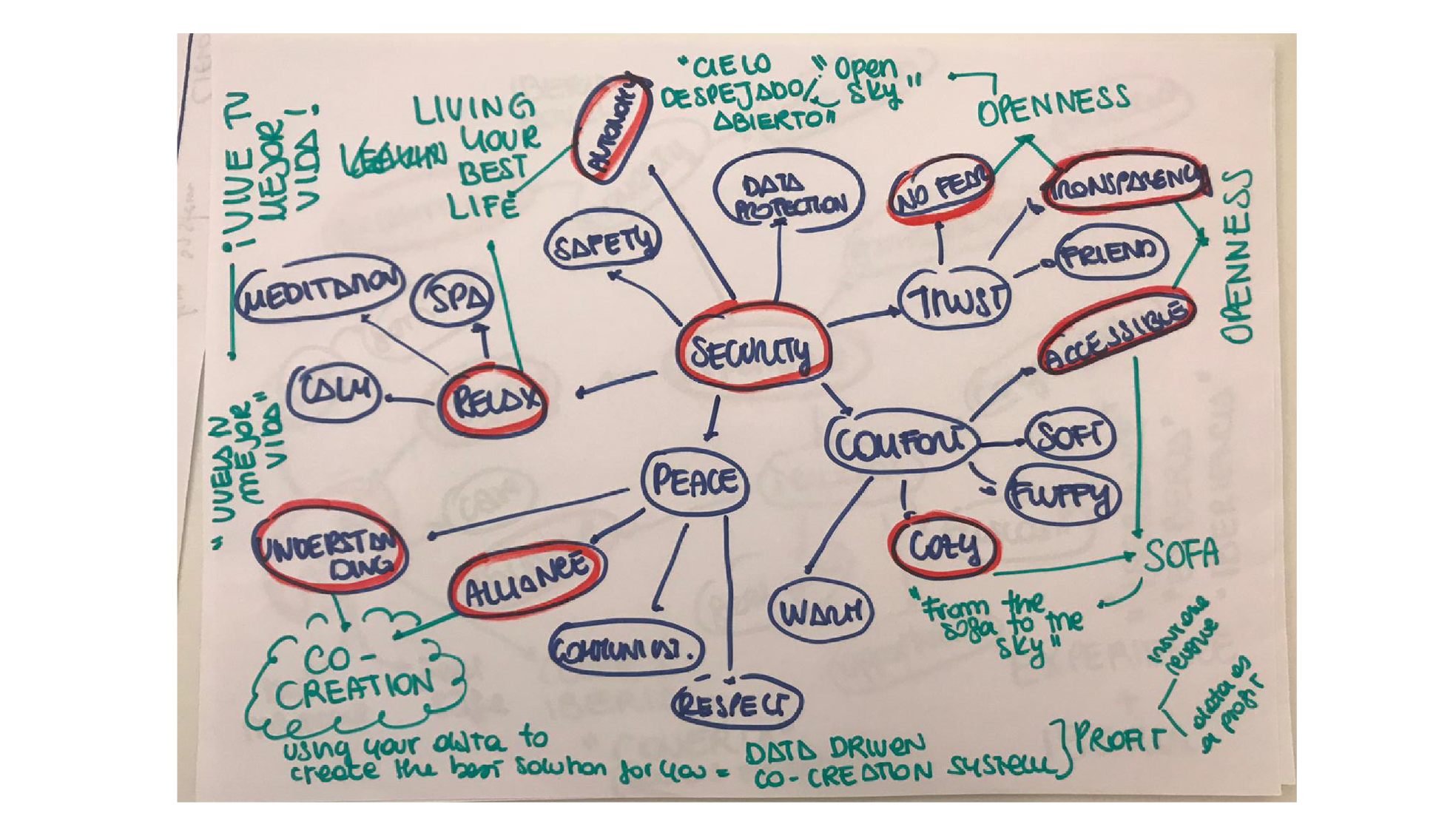
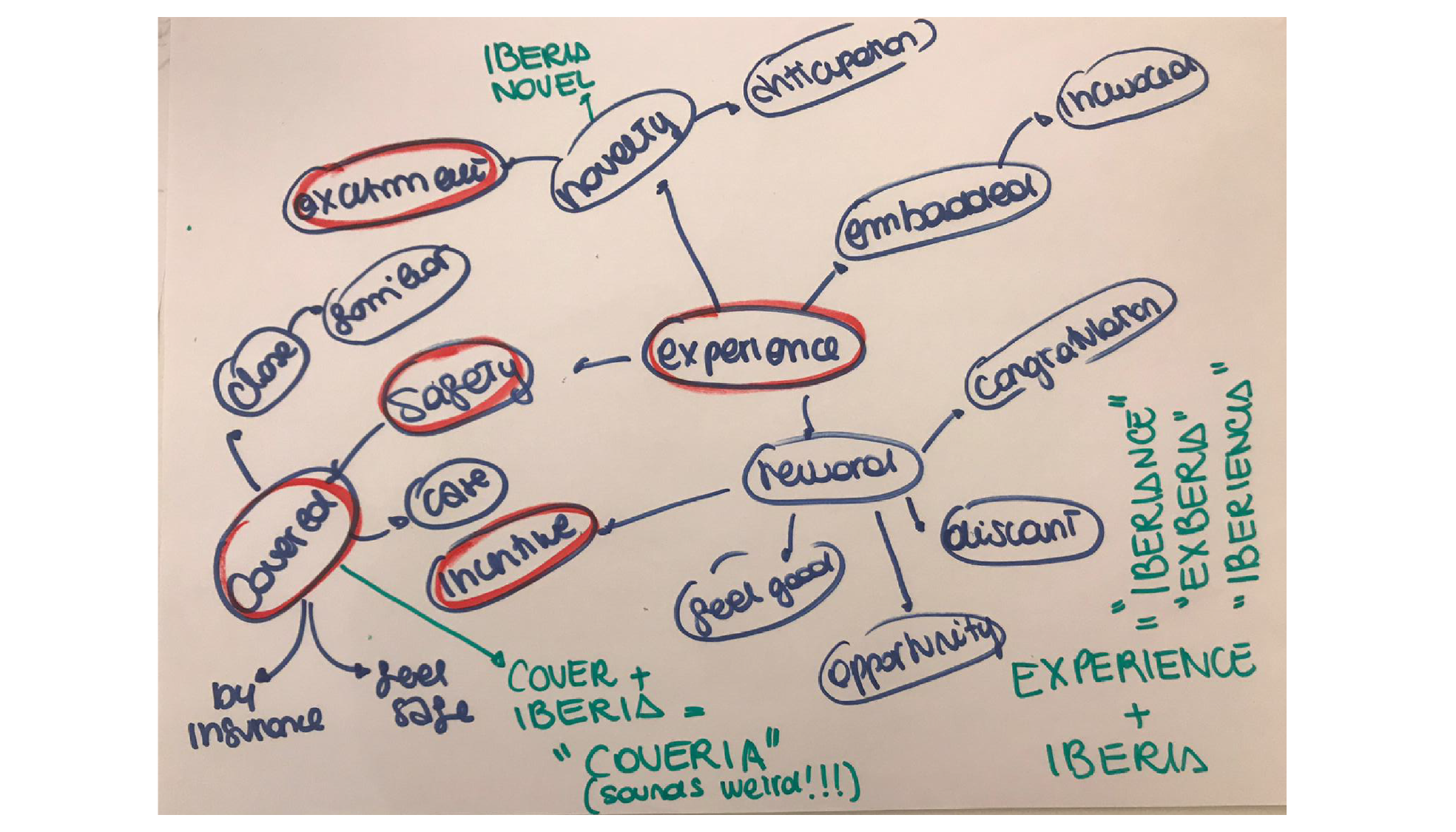
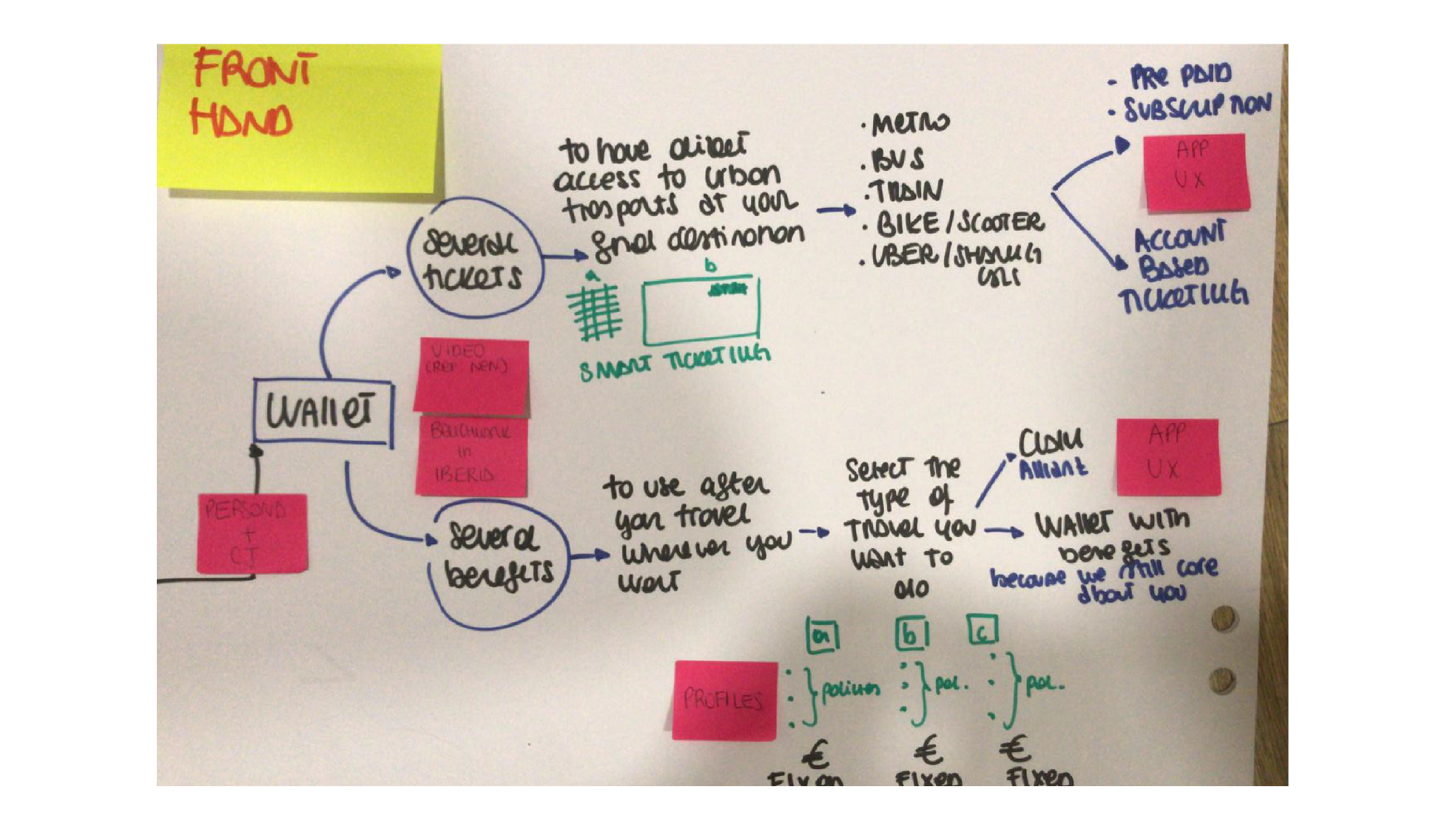
Prototype and Test
At this stage, after some iterations and previous paper mockups, the final prototype was designed. It was important for us to ensure the alignment of the design requirements and also have a service as seamless as possible.
Even though we were in an unthinkable situation regarding Covid-19 and all the protocols we had to take into account, it was possible for us to conduct user testing. After developing a first app prototype, we wanted to verify our assumptions in a qualitative user test. We encouraged the test persons to think aloud. With the help of a test guideline that we created in advance, we were able to gain valuable insights and integrate them into the final app design.
Here we tested our final prototypes and our services (Card-i and Wall-i) for their user experience and general usability with different test persons.
Moreover, we conducted over 5 user interviews at an earlier stage to find out the needs and desires. This allowed us to verify our assumptions and further improve our product.
The further implementation was on our partners, but to make sure that the experience is seamless we have to be completely coordinated.











